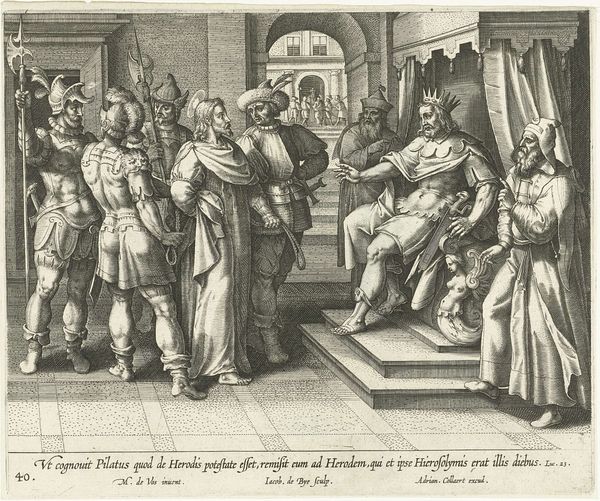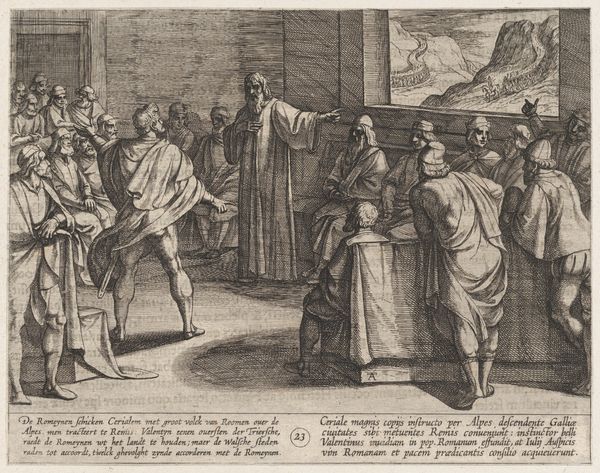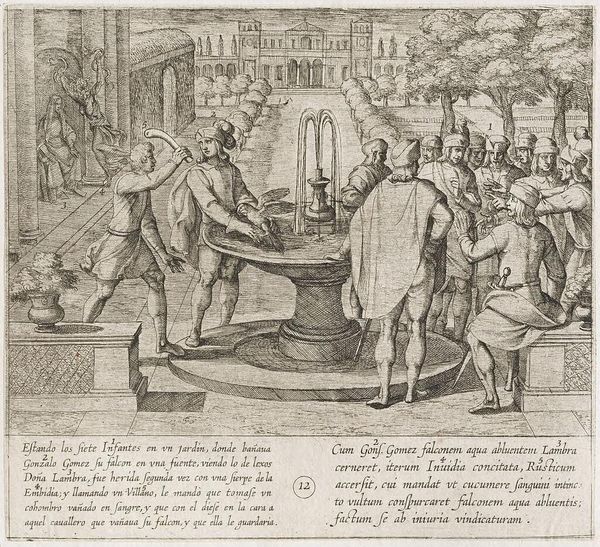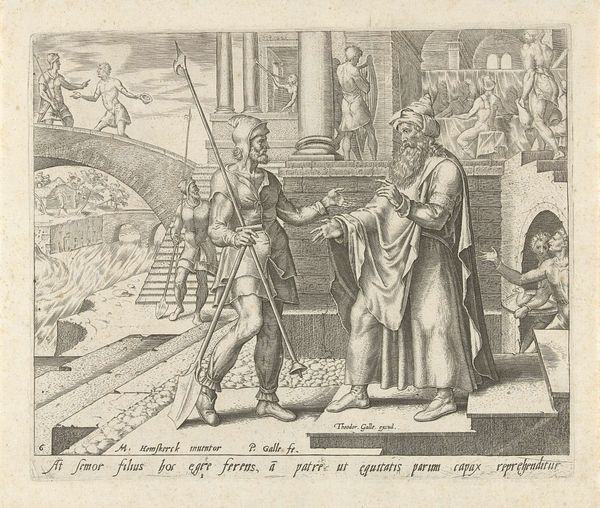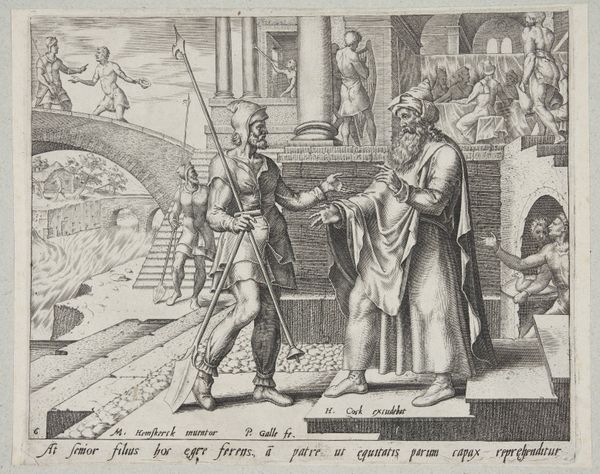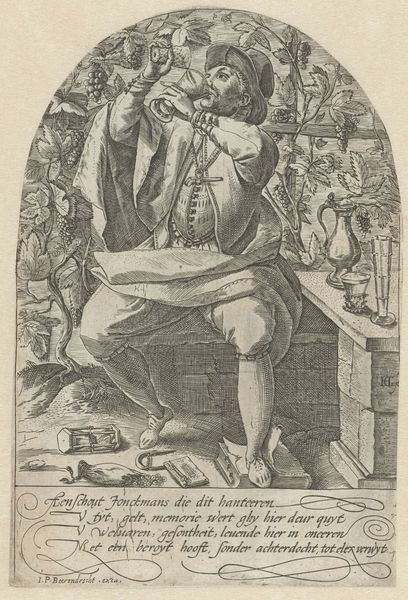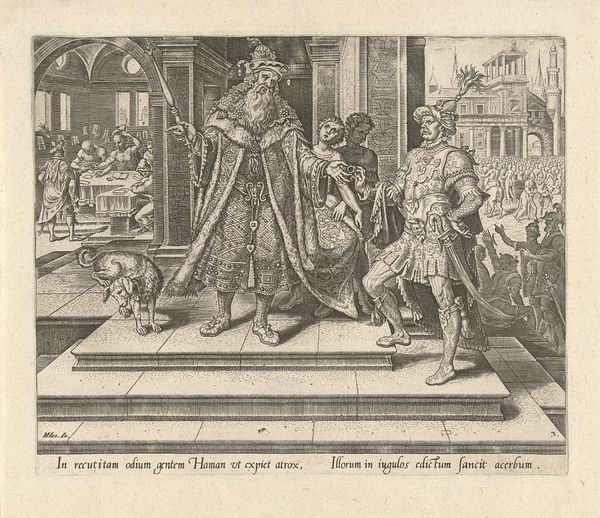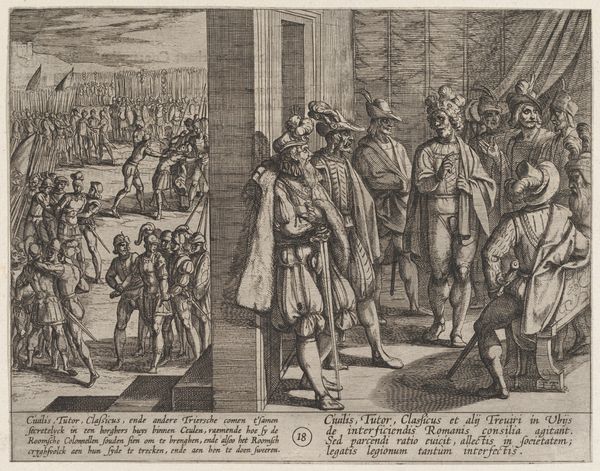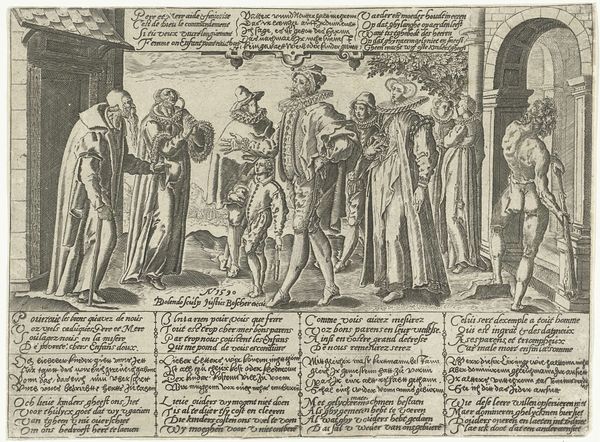
print, engraving
#
narrative-art
#
baroque
# print
#
old engraving style
#
figuration
#
genre-painting
#
engraving
Dimensions: width 366 mm, height 289 mm
Copyright: Rijks Museum: Open Domain
This engraving, titled "De geneesheer als mens", was created by Johann Gelle around the turn of the 17th century. The physician stands as a monumental figure, holding a urine flask, a symbol deeply entwined with the diagnostic practices of the time. This motif of uroscopy appears in medical illustrations across centuries, from medieval illuminated manuscripts to Renaissance prints, each time carrying the weight of knowledge and human fallibility. In ancient times urine was tied to all sorts of diagnosis, for example, the presence of ants was used to confirm diabetes mellitus. Consider this scene in psychoanalytic terms: the physician with his knowledge attempts to extract the secrets of the human body. This is a powerful image, engaging viewers on a deep, subconscious level, provoking anxiety about their own mortality, while projecting the physician as a capable healer who is able to decipher the body's cryptic language. This symbol evolves, resurfaces, and adapts. Once a vessel of truth, it is now a relic of an archaic past. This continuous evolution underlines how cultural memory and perception shape and reshape symbols across time.
Comments
No comments
Be the first to comment and join the conversation on the ultimate creative platform.

